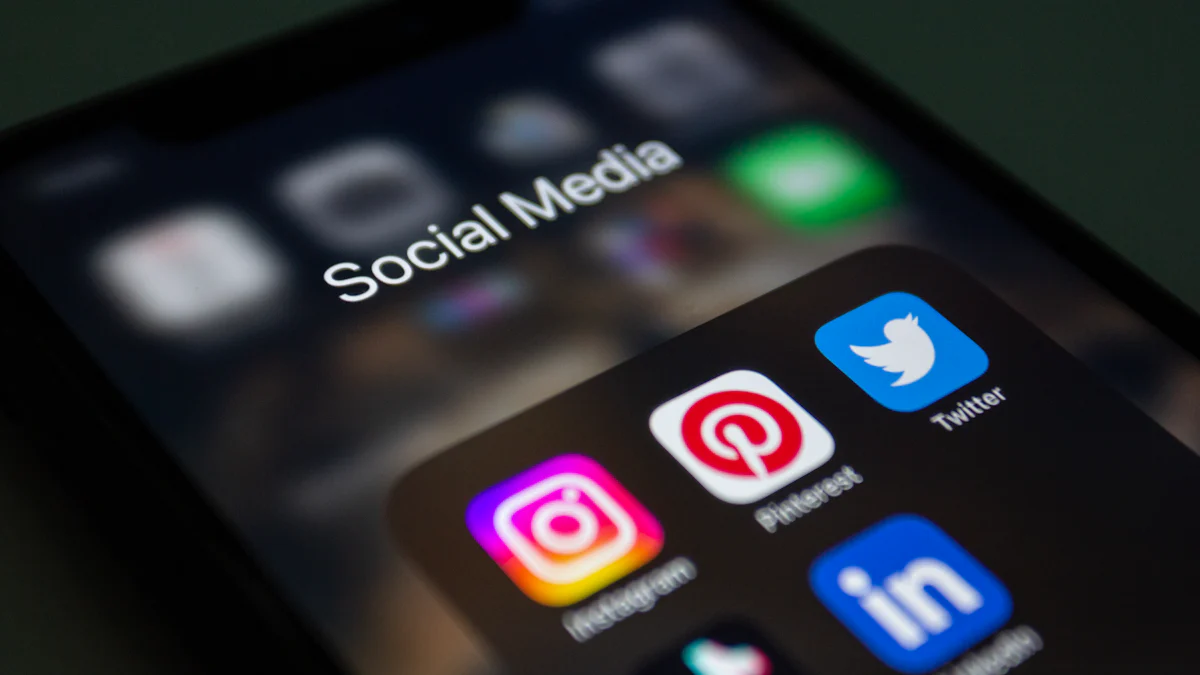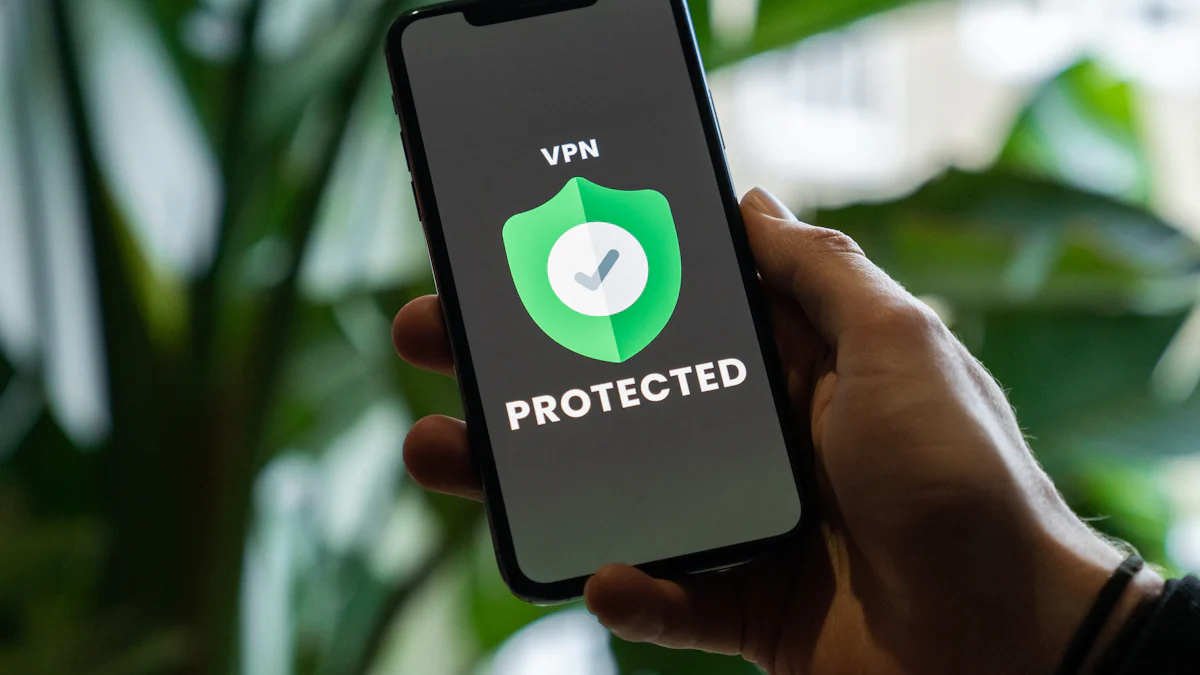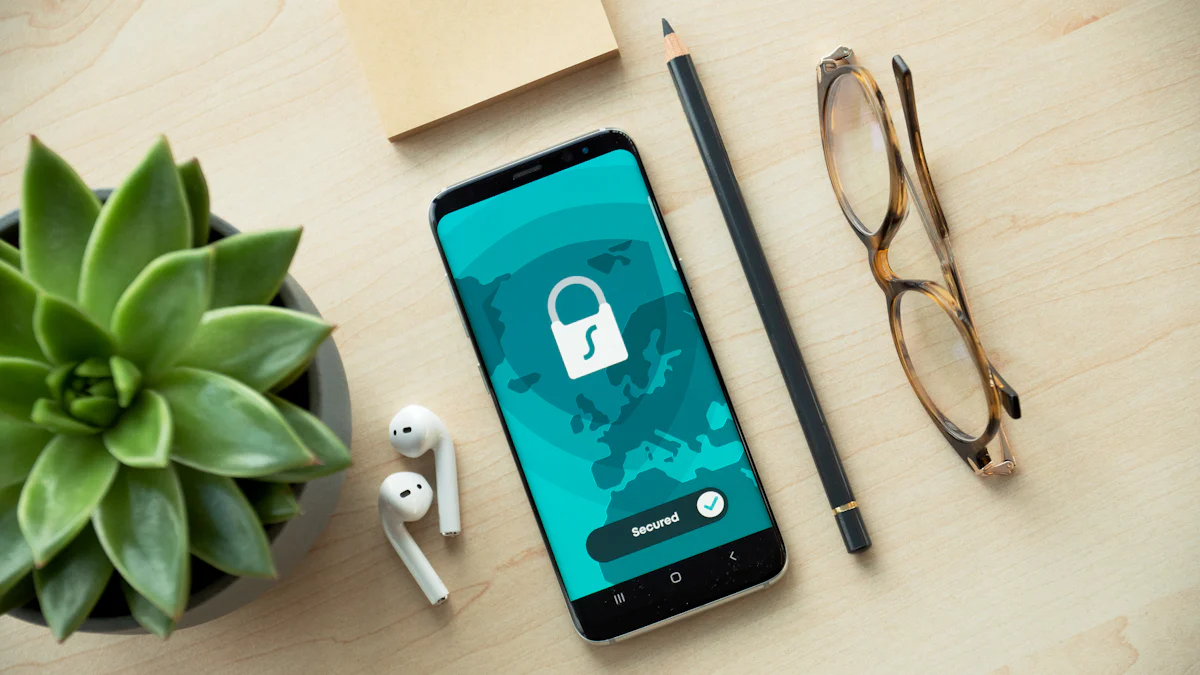Essential Privacy Tips for TikTok Influencers in 2025

In 2025, your online presence as a TikTok influencer is more than just content—it's your brand, your livelihood, and your connection to millions. But with this visibility comes a growing need to protect your privacy. Hackers and data thieves are constantly looking for ways to exploit influencers like you. Did you know that platforms like YouTube face breach costs as high as $1.2 million per incident? Here's a quick look at how privacy breaches are affecting social media influencers today:
| Platform | Percentage of Hacks | Monthly Breach Cases | Cost per Breach (USD) |
|---|---|---|---|
| Snapchat | 8% | 3,500 | N/A |
| 13% | N/A | N/A | |
| YouTube | 7% | N/A | 1,200,000 |
| 6% | N/A | N/A |
Oversharing can also lead to unintended consequences. For example, sharing too much personal information might expose you to risks like identity theft or even inappropriate searches like "tiktok influencers naked." By managing what you share and staying vigilant, you can avoid these pitfalls and keep your reputation intact.
Tip: Think twice before posting anything that reveals personal details. A little caution now can save you from big problems later.
Understanding TikTok Privacy Risks

Common Threats for TikTok Influencers
Account hacking and unauthorized access
Your TikTok account is a goldmine for hackers. They’re not just after your followers—they want your personal information too. Weak passwords or reusing the same password across platforms can make your account an easy target. Once hackers gain access, they can post inappropriate content, steal your data, or even demand a ransom to return control.
To protect yourself, always use strong, unique passwords. Combine uppercase letters, numbers, and symbols to make it harder to crack. And don’t forget to enable two-factor authentication (2FA). It’s like adding an extra lock to your door.
Oversharing personal information, including "tiktok influencers naked" risks
Oversharing information might seem harmless at first, but it can lead to serious consequences. Posting your location or showing too much of your home can expose you to identity theft or even physical threats. Some influencers have faced inappropriate searches like "tiktok influencers naked" because of the personal details they’ve shared online.
Think about what you’re revealing in your videos. Avoid showing identifiable landmarks or sharing real-time updates about your location. A little caution can go a long way in keeping you safe.
Consequences of Privacy Breaches
Damage to personal reputation and brand image
A privacy breach can tarnish your reputation overnight. Imagine someone hacking your account and posting offensive content. Your followers might lose trust in you, and brands could hesitate to collaborate. Rebuilding your image takes time and effort, so it’s better to prevent these issues in the first place.
Risks to physical safety and family security
Oversharing doesn’t just put you at risk—it can endanger your loved ones too. Here are some real-world risks:
- Identity theft from shared personal information.
- Violations of data protection rights.
- Increased chances of child abduction or trafficking due to parental sharing.
Protecting your privacy means protecting your family. Be mindful of what you post and educate your loved ones about online safety.
TikTok’s Role in Privacy Challenges
Data collection and sharing practices
TikTok collects a lot of data about you, from your browsing habits to your location. This data helps the platform personalize your experience, but it also raises privacy concerns. If you’re not careful, your personal information could end up in the wrong hands.
Review TikTok’s privacy policy regularly to understand what data they collect and how it’s used. You can also limit app permissions to reduce your exposure.
Algorithmic exposure and unintended visibility
TikTok’s algorithm is a double-edged sword. On one hand, it boosts your content to a wider audience. On the other, it can expose you to risks like biased visibility or censorship. Some influencers have even faced privacy issues because their personal information was unintentionally highlighted.
To stay safe, monitor how your content performs and adjust your privacy settings. Being proactive can help you avoid unwanted attention.
TikTok Privacy Tips for Influencers
Securing Your TikTok Account
Using strong, unique passwords
Your first step to secure your TikTok account is creating a strong password. Avoid using common words, birthdays, or anything predictable. Instead, mix uppercase letters, numbers, and symbols. For example, a password like T!kT0k2025$ is much harder to crack than password123. Don’t reuse passwords across platforms. If you struggle to remember them, consider using a password manager.
Enabling two-factor authentication (2FA)
Two-factor authentication adds an extra layer of security to your account. Even if someone guesses your password, they won’t get in without the second verification step. To enable 2FA, go to your TikTok settings and follow the prompts. It’s a simple way to lock down your TikTok account and keep hackers out.
Managing Privacy Settings
Adjusting profile visibility (public vs. private)
Deciding between a public or private account is crucial. A private account limits who can see your content, while a public profile reaches a wider audience. If you’re an influencer, you might prefer staying public. However, you can still keep your public profile low by adjusting other privacy settings.
Here’s how to update your privacy settings:
- Go to the Profile tab.
- Tap the menu icon in the top-right corner.
- Navigate to Settings and privacy > Privacy > Suggest your account to others.
- Disable all four options: Contacts, Facebook friends, People with mutual connections, and People who open or send links to you.
This ensures your account stays visible only to the audience you choose.
Controlling who can comment, duet, or stitch
TikTok allows you to control interactions on your videos. You can decide who can comment, duet, or stitch your content. Limiting these features reduces the risk of harassment or misuse. To adjust these settings, go to your privacy settings and customize them based on your comfort level.
Avoiding Oversharing
Limiting personal details in videos
Oversharing can lead to serious risks like cyberbullying, stalking, or even identity theft. Avoid showing personal details like your home address, school name, or family members in your videos. Sharing less keeps you and your loved ones safe.
Avoiding real-time posting and location tags
Real-time posting might seem exciting, but it can expose your location to strangers. Instead, post your videos after you’ve left the location. Skip location tags altogether to stay private. This small change can make a big difference in protecting your privacy.
Tip: Always think about what you’re sharing before hitting “Post.” A little caution now can save you from regret later.
Protecting Personal and Family Safety

Safeguarding Physical Security
Avoiding identifiable landmarks in videos
When filming TikTok videos, pay attention to your surroundings. Landmarks like street signs, unique buildings, or even your house number can reveal your location. This might seem harmless, but it can compromise your safety. To stay protected, choose neutral backgrounds or film indoors where no identifiable details are visible. If you’re filming outside, double-check your footage before posting to ensure nothing gives away your location.
Using a P.O. box or virtual mailbox for correspondence
As an influencer, fans or brands might want to send you packages. Sharing your home address is risky. Instead, set up a P.O. box or use a virtual mailbox service. These options keep your personal address private while still allowing you to receive mail. It’s a simple step that adds an extra layer of protection for you and your family.
Managing Online Interactions
Dealing with trolls and harassment
Trolls and online harassment are common challenges for influencers. If someone leaves hateful comments or messages, don’t engage. Block and report them immediately. TikTok also has tools to filter comments, so you can automatically hide offensive language. Protecting your mental health is just as important as your physical safety.
Setting boundaries with followers
It’s great to connect with your audience, but setting boundaries is essential. Avoid sharing personal details like your daily routine or private life. Politely decline if followers ask invasive questions. Clear boundaries help maintain your privacy and ensure interactions remain respectful.
Protecting Family Members
Keeping family out of public content
Your family might not want to be part of your TikTok journey, and that’s okay. Avoid including them in your videos unless they’ve given explicit permission. Even then, think about the risks. Keeping your family out of public content reduces their exposure to unwanted attention and keeps them safe.
Educating loved ones about online safety
Your family’s online habits can impact your privacy. Teach them how to stay safe online with these tips:
- Set household internet rules to guide online behavior.
- Explain why privacy matters and the dangers of oversharing.
- Use parental control tools to restrict access to unsafe websites.
- Keep communication open about their online experiences.
- Create device-free zones to encourage healthier tech habits.
By educating your loved ones, you’re not just protecting them—you’re also safeguarding your own privacy.
Tip: These safety tips for influencers can help you and your family stay secure while navigating the digital world.
Data Awareness and Disclosure Requirements
Understanding TikTok’s Data Practices
What data TikTok collects and how it is used
TikTok gathers a surprising amount of information about you. From your account details to the content you create, the app tracks a wide range of data. It even collects clipboard information from your device. Why? TikTok uses this data to personalize your experience, recommend videos, and process transactions.
TikTok collects various types of data from users, including account and profile information, user-generated content, messages, purchase information, and device clipboard information. This data is used for personalized recommendations, communication, and transaction processing.
Understanding what TikTok collects helps you make informed decisions about your privacy. Take time to review the app’s privacy policy and adjust your settings to limit unnecessary data collection.
Disclosure requirements for sponsored content
If you’re working with brands, you must follow TikTok’s disclosure requirements to stay compliant with regulations. These rules ensure transparency and protect your audience from misleading content. Here’s a quick breakdown of what you need to know:
| Requirement | Description |
|---|---|
| Enable Disclosure Toggle | You must enable the commercial content disclosure toggle when posting Branded Content. |
| Clear Identification | The product or service must be clearly identified without requiring users to access your profile. |
| No False Claims | You must not make false, deceptive, or misleading claims about the products or services. |
| Compliance with Laws | Ensure compliance with all applicable laws and regulations. |
| Prohibited Content | Do not promote illegal products or services or those in prohibited industries. |
Following these guidelines not only keeps you compliant with FTC regulations but also builds trust with your audience. Transparency is key in influencer marketing legal compliance.
Minimizing Data Exposure
Limiting permissions for the TikTok app
You don’t have to give TikTok access to everything on your device. Review the app’s permissions and disable anything unnecessary. For example, if TikTok doesn’t need your location or microphone, turn those off. This simple step can significantly reduce your data exposure. If you ever feel uncomfortable, you can revoke TikTok's access to certain features through your device settings.
Regularly reviewing and deleting old content
Old videos might contain information you no longer want to share. Go through your TikTok profile and delete any outdated or overly personal content. Regular cleanups help you stay in control of your privacy and ensure you’re not unintentionally sharing sensitive details.
Using Third-Party Tools Wisely
Avoiding unverified apps and services
Third-party apps might promise to boost your TikTok performance, but many come with risks. Unverified tools can steal your data or compromise your account. Stick to trusted services and always check reviews before downloading anything.
Monitoring app permissions on your device
Even legitimate apps can overreach. Regularly check the permissions you’ve granted to all apps on your device, not just TikTok. Remove access for anything that seems unnecessary. Staying vigilant helps you comply with data privacy regulations and keeps your information secure.
Tip: Protecting your data doesn’t have to be complicated. Small changes, like limiting permissions and avoiding risky apps, can make a big difference.
Staying Ahead of Privacy Trends
Monitoring Privacy Updates
Keeping up with TikTok’s policy changes
TikTok updates its policies regularly, and staying informed is crucial. These changes can affect how your data is collected, stored, or shared. If you don’t keep up, you might unknowingly expose yourself to risks. Make it a habit to check TikTok’s privacy policy every few months. You can find it in the app’s settings under "Privacy."
Another way to stay updated is by following TikTok’s official announcements. They often share important updates through their blog or social media channels. Staying informed helps you make smarter decisions about your account and content.
Following trusted privacy experts
Privacy experts are your go-to guides for navigating the digital world. They break down complex topics and share actionable tips. Follow experts on platforms like Twitter or LinkedIn to stay ahead of trends. Some even offer newsletters or blogs that explain how to protect your data. By learning from them, you can adapt quickly to new challenges and keep your TikTok account secure.
Adopting Future-Proof Strategies
Using VPNs for added security
A Virtual Private Network (VPN) is a simple tool that adds an extra layer of security to your online activities. It hides your IP address and encrypts your internet connection. This makes it harder for hackers to track you or steal your data. When using TikTok, a VPN can protect your location and browsing habits. Choose a reliable VPN service and turn it on whenever you’re online. It’s a small step that makes a big difference.
Diversifying platforms to reduce dependency
Relying solely on TikTok can be risky. What if the platform faces a major outage or changes its algorithm? Diversifying your presence across multiple platforms ensures you’re not putting all your eggs in one basket.
Here’s why it’s a smart move:
- Resilience: Protects your business from disruptions on any single platform.
- Scalability: Expands your reach to broader audiences.
- Stability: Builds long-term assets like websites and email lists that aren’t influenced by external platform decisions.
Start by creating accounts on platforms like Instagram, YouTube, or even a personal blog. This strategy not only secures your brand but also opens up new opportunities.
Building a Privacy-Conscious Community
Educating followers about online safety
Your followers look up to you, so why not use your platform to spread awareness? Share tips on how they can protect their privacy online. For example, you could create a TikTok video explaining the importance of strong passwords or avoiding suspicious links. When you educate your audience, you’re not just helping them—you’re also building a community that values safety.
Promoting responsible content sharing
Encourage your followers to think before they post. Remind them to avoid oversharing personal details or tagging locations in real-time. You can even start a trend or hashtag that promotes responsible sharing. By leading the way, you inspire others to follow suit and create a safer online environment for everyone.
Tip: Building a privacy-conscious community strengthens your bond with followers and enhances your reputation as a responsible influencer.
In 2025, protecting your privacy as a TikTok influencer isn’t just important—it’s essential. Your account, your data, and even your reputation depend on it. By securing your TikTok account with strong passwords and two-factor authentication, you can block hackers before they even try. Adjusting your privacy settings and limiting what you share keeps your personal life safe from prying eyes.
Staying informed about TikTok’s data practices helps you stay ahead of potential risks. Take time to review policies and keep up with updates. Proactive steps like these not only protect your privacy but also build trust with your audience. Remember, a little effort now can save you from big problems later.
Take charge of your privacy today. Your future self will thank you!
FAQ
What should I do if my TikTok account gets hacked?
Act fast! Change your password immediately and enable two-factor authentication. Report the issue to TikTok through their support page. If sensitive content was posted, inform your followers and clarify the situation. Staying calm and proactive helps you regain control quickly.
How can I stop strangers from finding my TikTok profile?
Adjust your privacy settings. Switch your account to private and disable the "Suggest your account to others" feature. This limits who can find and follow you. You can also block specific users to prevent unwanted interactions.
Is it safe to use third-party apps with TikTok?
Be cautious. Many third-party apps claim to enhance your TikTok experience but may compromise your data. Stick to verified tools and always check reviews before downloading. Avoid granting unnecessary permissions to protect your account and personal information.
Can I hide my location while using TikTok?
Yes! Turn off location permissions for TikTok in your device settings. Avoid tagging locations in your videos or posting in real-time. These steps keep your whereabouts private and reduce the risk of unwanted attention.
How often should I review my TikTok privacy settings?
Review them every few months or whenever TikTok updates its policies. Regular checks ensure your settings align with your privacy needs. Staying informed helps you stay ahead of potential risks and maintain control over your account.
See Also
Essential TikTok Influencer Marketing Techniques for 2024 Success
A Beginner's Guide to TikTok Influencer Marketing
Strategies to Identify TikTok Influencers Aligned with Your Brand
